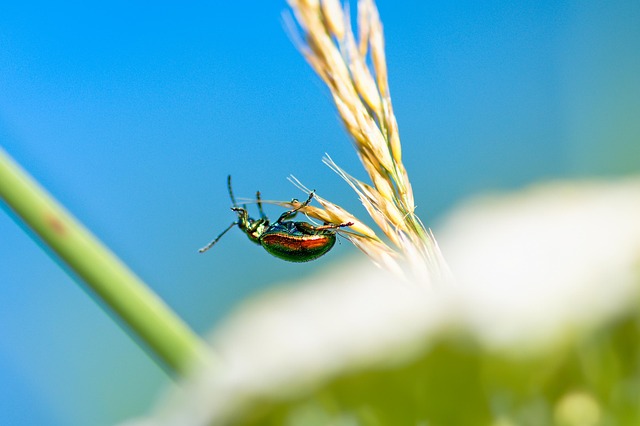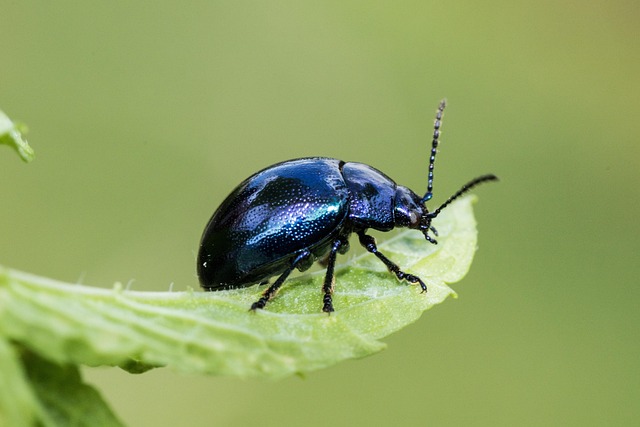Eco-Friendly Solutions: Expert Tips for Carpet Beetle Prevention

Carpet beetles, drawn to natural fibers, can damage carpets. Eco-friendly solutions involve regular…….
Understanding Carpet Beetles Removal
Carpet beetles, a diverse group of insects, are known for their tendency to infest carpets, clothing, and other textile products. Their presence can lead to significant damage and pose health risks due to the allergens and fibers they consume. Carpet beetle removal involves strategies to eliminate existing populations and prevent future infestations. This process includes thorough cleaning, environmental management, and sometimes the use of professional pest control services. Understanding the biology and behavior of these beetles is crucial for effective removal, as is recognizing the signs of an infestation early on.
Global Impact and Trends
Carpet beetle infestations are a global issue, affecting homes, museums, textile industries, and warehouses alike. The impact of these pests varies by region, influenced by climate, local building practices, and the prevalence of certain materials in textiles. In recent years, there has been an increase in resistance to traditional pesticides, necessitating innovative control measures. Additionally, the rise in international trade has led to the spread of different carpet beetle species, altering the dynamics of infestations worldwide.
Economic Considerations
The economic implications of carpet beetles are significant. Beyond the direct costs associated with treatment and damaged goods, there are indirect costs such as loss of reputation for businesses, increased insurance premiums, and potential health care expenses. The market for carpet beetle control products is substantial, with a range of chemical and non-chemical solutions available. Investment in research and development for new methods of removal and prevention is critical for both economic sustainability and environmental health.
Technological Advancements
Recent advancements in technology have greatly improved carpet beetle detection and treatment. Innovations such as advanced sensors can detect the presence of these pests early, while heat treatment technologies offer a non-chemical solution for large-scale infestations. The development of biodegradable baits and traps that are more environmentally friendly is another area of progress. Looking ahead, artificial intelligence and machine learning could further revolutionize the field by predicting infestations and optimizing treatment strategies.
Policy and Regulation
Global policies and regulations on pest control, including carpet beetle management, vary widely. In some regions, strict guidelines govern the use of pesticides, while in others, the focus is on non-chemical methods. International bodies such as the World Health Organization (WHO) and the Food and Agriculture Organization (FAO) provide guidelines that influence national policies. These frameworks play a crucial role in shaping the approach to carpet beetle removal and ensuring public health and safety.
Challenges and Criticisms
One of the main challenges in carpet beetle removal is resistance to pesticides, which has led to a reevaluation of control strategies. There is also criticism regarding the environmental impact of some treatments. To address these issues, integrated pest management (IPM) approaches are being adopted, combining multiple techniques for more effective and sustainable outcomes. Education and awareness campaigns are essential in teaching the public how to prevent infestations and recognize signs early on.
Case Studies
Several case studies illustrate successful carpet beetle removal strategies. One such example is a museum that effectively prevented an infestation by implementing regular monitoring, climate control, and exclusion practices. Another case involves a textile manufacturer that successfully managed an outbreak using a combination of IPM techniques and biodegradable bait stations. These studies not only demonstrate the effectiveness of various strategies but also highlight the importance of proactive management.
Future Prospects
The future of carpet beetle removal is promising, with ongoing research into new control methods, better understanding of the beetles’ behavior, and improved detection technologies. The potential for genetic engineering to develop more effective beetle-resistant materials is an exciting development. Additionally, public awareness campaigns will continue to play a role in reducing infestations by educating homeowners and businesses on preventive measures.
Conclusion
Carpet beetle removal is a multifaceted issue that requires a comprehensive approach, encompassing biological understanding, economic considerations, technological innovation, and policy alignment. Through effective management strategies, we can mitigate the impact of these pests on our textiles, health, and economy. The continuous evolution in this field ensures that we remain one step ahead of these persistent adversaries.
FAQ Section
What are carpet beetles? Carpet beetles are a group of small insects that include species like the black carpet beetle, furniture beetle, and varied carpet beetle. They feed on natural fibers found in carpets, clothing, and upholstery.
How can I tell if I have a carpet beetle infestation? Signs of an infestation include finding adult beetles, larvae, or their fecal pellets in your textiles. There may also be visible damage to fabrics.
What are the health implications of carpet beetles? Carpet beetles can trigger allergies and asthma attacks in sensitive individuals due to the dust and debris they produce while feeding on fibers.
Are there any natural ways to control carpet beetles? Yes, methods include regular vacuuming, controlling humidity and temperature, using diatomaceous earth, and employing pheromone traps to monitor populations.
Can I use essential oils to get rid of carpet beetles? Some essential oils, such as lavender, eucalyptus, and peppermint, may repel carpet beetles when used in a concentrated form. However, their effectiveness can vary, and they are not a substitute for established control methods.
What is the most effective way to treat a serious infestation? Heat treatment is often considered the most effective method for large-scale infestations, as it can kill all life stages of carpet beetles without leaving harmful residues.
How can I prevent carpet beetles from returning after treatment? Prevention involves regular cleaning, proper storage of textiles, sealing food sources, maintaining a clean environment, and using protective measures for vulnerable items like antiques or stored clothing.

Carpet beetles, drawn to natural fibers, can damage carpets. Eco-friendly solutions involve regular…….

Carpet beetles, attracted to warm, humid environments, cause damage by feeding on fibers in carpets……..

Carpet beetles, common household pests, cause significant fabric and carpet damage if left unchecked…….

Carpet beetles, small but destructive household pests, cause severe damage to fabrics and carpets. I…….

Carpet beetles, household pests, cause damage through a four-stage life cycle. Discreet signs like h…….

Carpet beetles pose a significant threat to fabrics and carpets in homes and businesses, causing uns…….

Carpet beetles are household pests that thrive in dirty areas, feeding on keratin in textiles. They…….

Carpet beetles, with over 1,000 global species, pose significant challenges due to their tiny size a…….

Carpet beetles infest various fabrics and have a 4-stage life cycle. Traditional control methods use…….

Carpet beetles, tiny but destructive, thrive in warm, humid homes. Preventative measures like regula…….